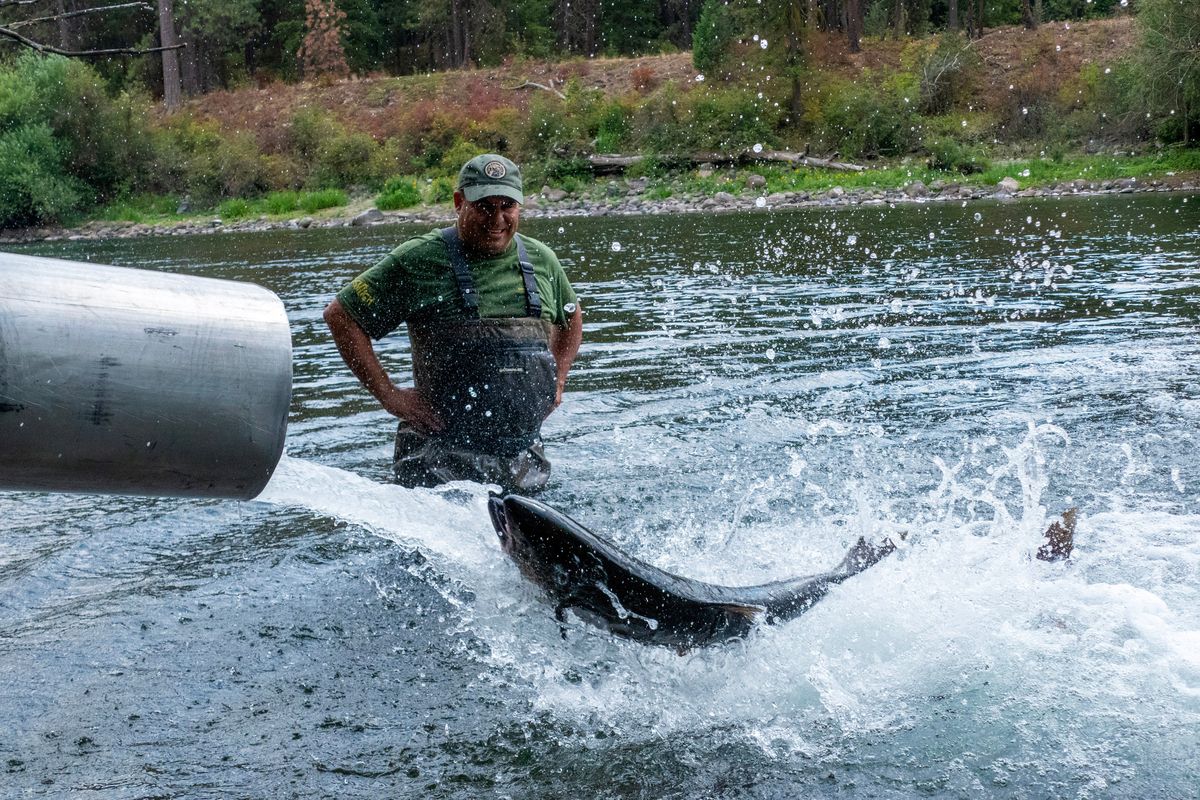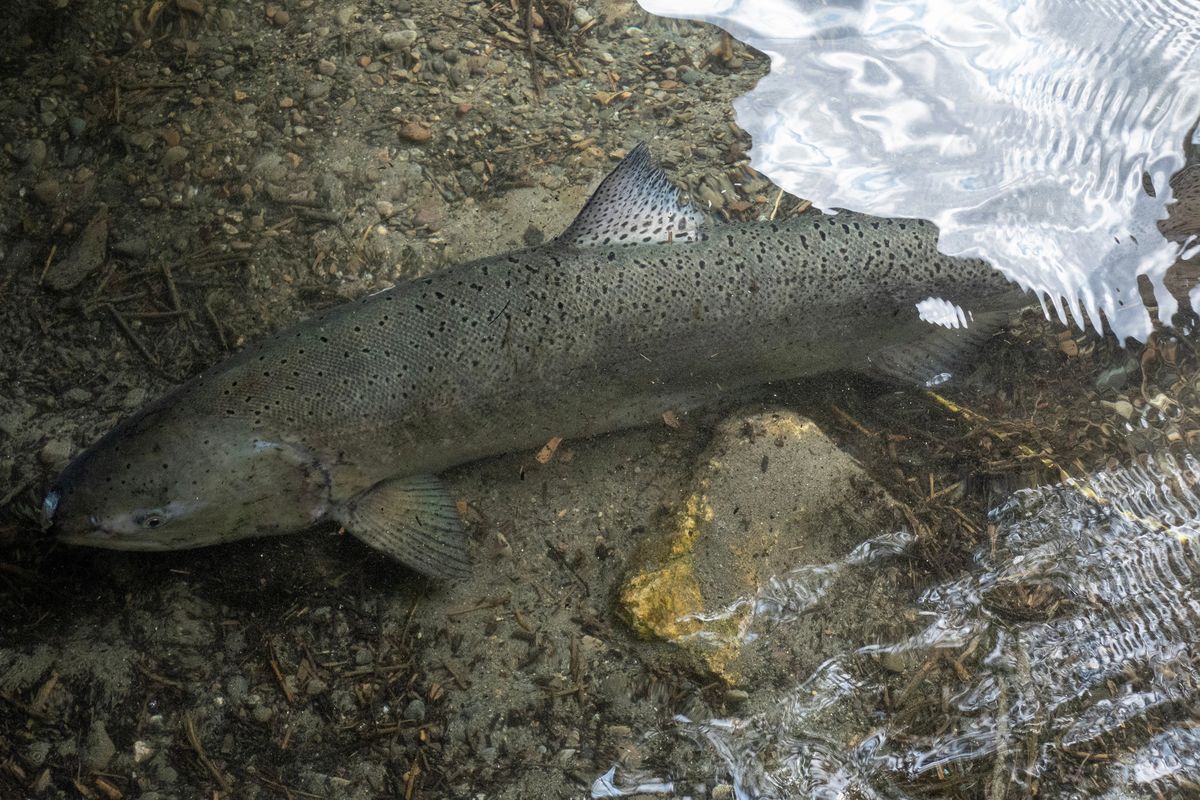Coeur d’Alene Tribe releases 150 Chinook salmon into Spokane River as part of ongoing reintroduction efforts
Aaron Penney, a fisheries biologist for the Coeur d’Alene Tribe, watches as giant chinook salmon are released from a fish hatchery truck into the Spokane River near the T.J. Meenach Bridge Friday, Aug. 16, 2024. The tribal fish program released more than 140 fish as part of their efforts to increase salmon populations in the region’s rivers. (Jesse Tinsley/The Spokesman-Review)
Two truckloads of live Chinook salmon were released into the Spokane River by the Coeur d’Alene Tribe Friday afternoon.
The fish, some of which were as large as 20 pounds, leapt into the air and crested as they began their journey upstream.
The 150 fish were taken from the Entiat Fish Hatchery as part of an ongoing initiative by the Colville Reservation, the Coeur d’Alene Tribe and the Spokane Tribe. The tribes signed into a 20-year agreement with the Bonneville Power Administration last September, which provided them $200 million to explore the feasibility of chinook reintroduction in the river.
The fish released Friday made up the third batch released into the Spokane River this year, putting the total at around 500.
“The ultimate goal is, as a tribal leader and a father, that my grandkids or great grandkids can stand on the banks of the Spokane River and catch a fish,” Coeur d’Alene Tribe Vice Chair Gene “Hemene” James said.
Chinook once served as a staple in the diets of the Native Americans along the river, but James said that there is much more significance associated with the fish than just the act of consumption.
“A majority of the interaction we had with our neighboring tribes was during the salmon runs,” James said. “We would get together after a long winter knowing that we were going to refill our food banks, we were going to get the certain ceremonies that are done at that time of the season. We were going to see relatives that we didn’t get to see, get to make marriages, political deals.”
Though the salmon had been decreasing in population in the river for decades before, James said that the final blow was the erection of Grand Coulee Dam in the 1930s . Salmon could no longer return upstream to spawn.
In the 10 years he has held his position as the leader of the Coeur d’Alene Tribe’s freshwater spawning fish division, Thomas Biladeau said that he has watched federal and local government along with elected officials come to realize the importance of the Tribes’ efforts to restore the river.
“They see it. How it can benefit their community,” Biladeau said. “And they want to see it happen.”
But nobody is talking about removing the dams that led to the Chinook’s disappearance in the first place.
“The idea with this study is to figure out how can we get salmon back into these areas while maintaining the benefits that those projects provide.” Biladeau said.
While the Coeur d’Alene Tribe and others have released Salmon into the river for mainly cultural and educational purposes in the past, this initiative is unique in that it involves data collection.
Salmon from previous releases had trackers on them so that the Tribe could monitor locations fish were unable to traverse. For the 150 salmon released Friday, the Coeur d’Alene Tribe took genetic samples of each and plan to monitor whether or not the group is successful in reproducing. They should spawn in around a month.
“I could say we are fulfilling both of those needs. There’s a cultural component to this, but there’s also – we’re actively doing research on these fish at the same time,” Biladeau said.
James said that while the tribes have held knowledge on the importance of bringing salmon back to the river for decades, having scientific data is the avenue that legitimizes their traditional knowledge.
“We want to see our rivers get healthy again. We want to see the riparian zones get healthy again. We want to see the birds of prey get healthy again and be whole, which they – along with us – can’t be without until these fish are returned,” James said. “We’ve accepted responsibility – we’ve taken the burden. We’ve picked up that huge boulder to try to move it as far as we could. Not just for the sole benefit of the Indian people, but for the entire region.”
James said that there is still a long way to go when it comes to bringing the Chinook back to the Spokane River.
“We want to show that that was a small stepping stone in the process and that we are not satisfied with where we’re at right now,” James said. “That was the easy part of procuring partners and funding. But we want to keep the interest and the excitement of local residents that the Tribes are working together to make this a reality.”

